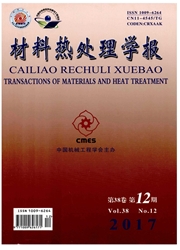

 中文摘要:
中文摘要:
应用计算机模拟的方法研究了生物质复合材板坯内部孔隙的形成。通过对板坯内孔隙体积比率与加工参数包括原料的几何形状、材料的公称密度之间的关系的考察结果表明,由模型得到的数据与由实验得到的数据的结果趋向一致。研究中通过在板材热压实验中测量板坯中心部位的温度和气体压力变化来说明孔隙对热和质传输的影响,实验和分析的结果也验证了该模型和模拟的方法对于研究生物质复合材板坯内孔隙具有一定的有效性。
 英文摘要:
英文摘要:
The voids formation in bio-based composite mat was researched by using computer simulation technology. Different processing variables were investigated to find their relationship to the void volume ratio in the mat, which included material geometry, and nominal board density. The simulated and experimental data were then compared. The results indicat the simulated and experimental data have the same changing trends with the processing conditions. Moreover, to explain the effect of the void on heat and mass transfer, the temperature and air pressure of the mat center were measured during hot pressing. The results from experiments and analyses are also able to indicate that this model and simulation could be used to research the characteristics of the void in bio-based composite mat and heat and mass transfer during hot pressing.
 同期刊论文项目
同期刊论文项目
 同项目期刊论文
同项目期刊论文
 期刊信息
期刊信息
